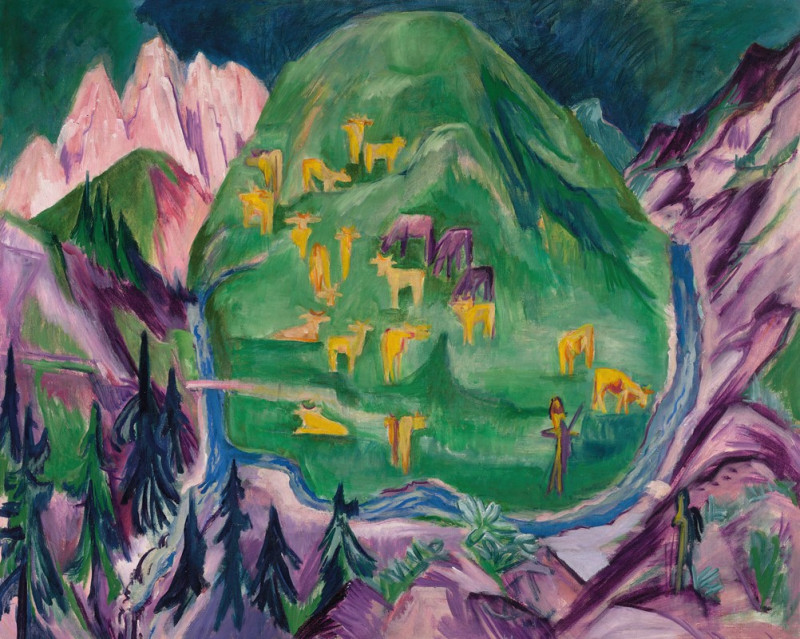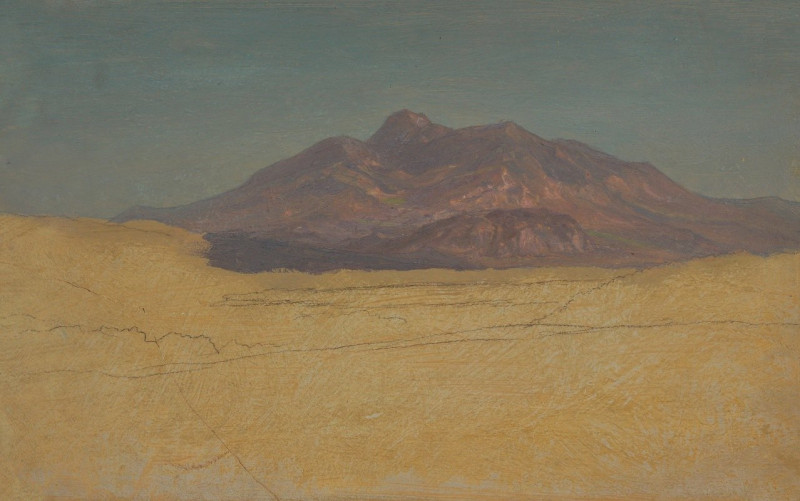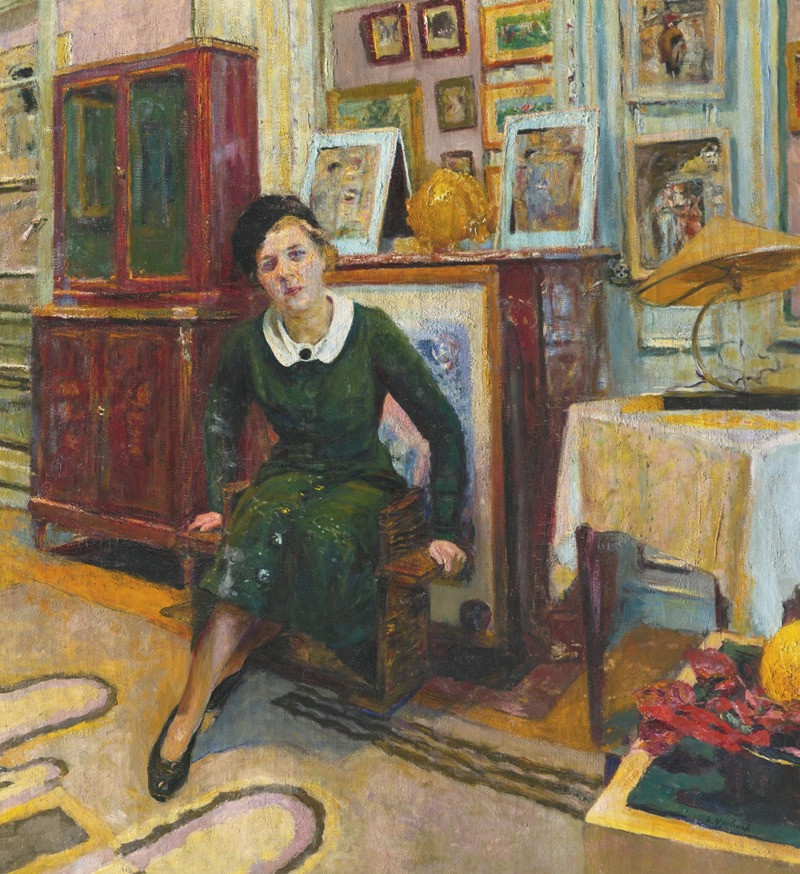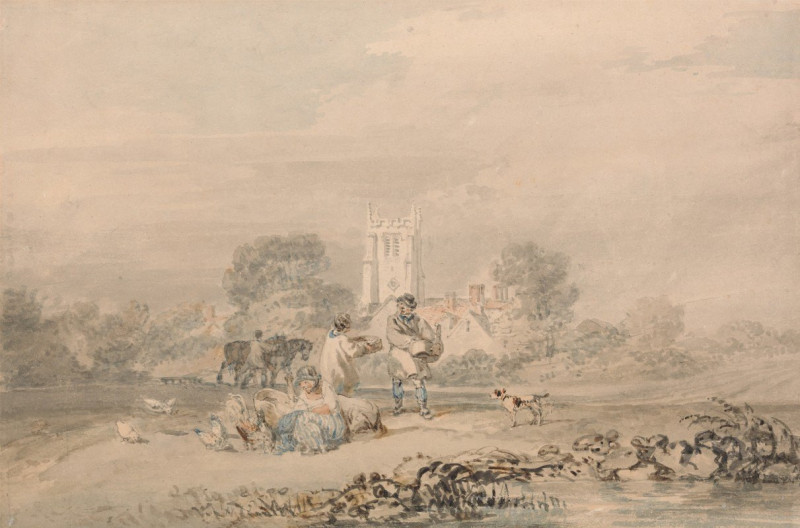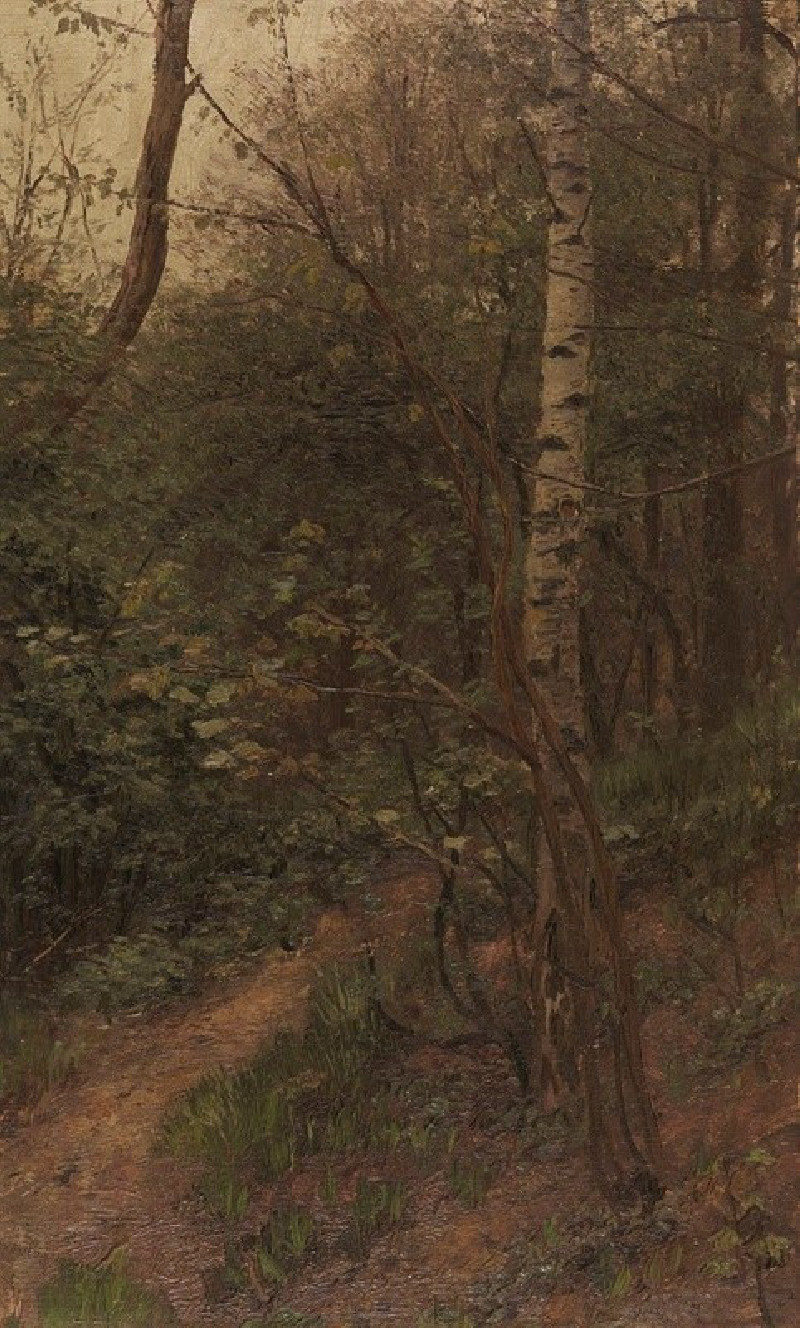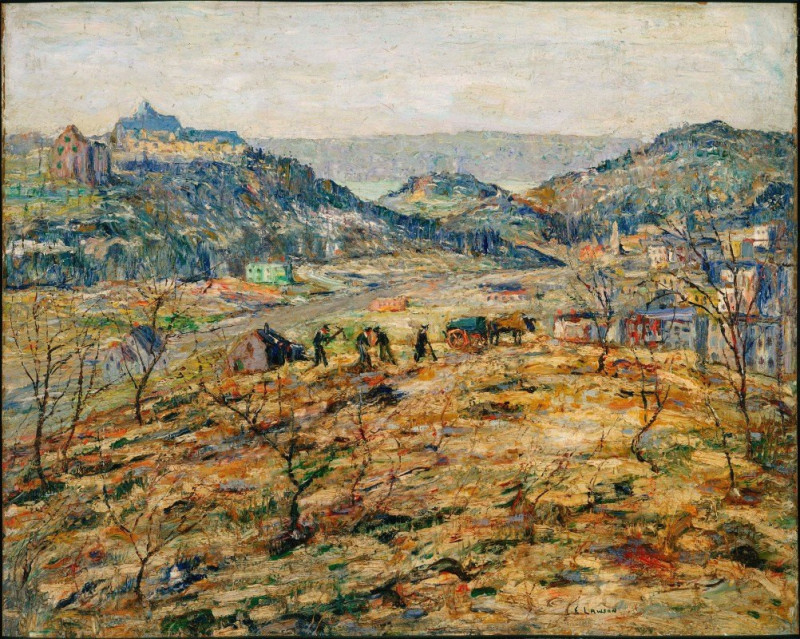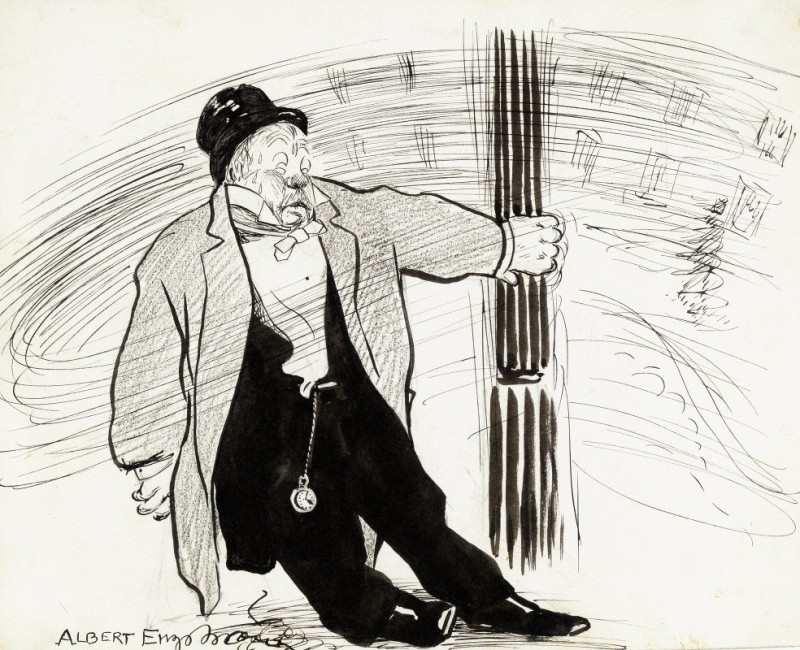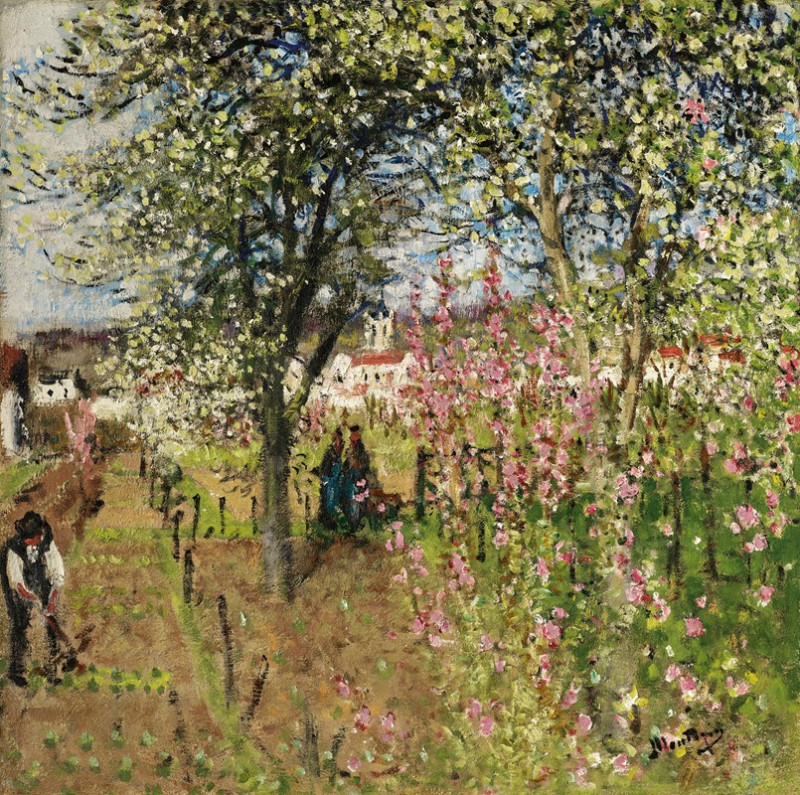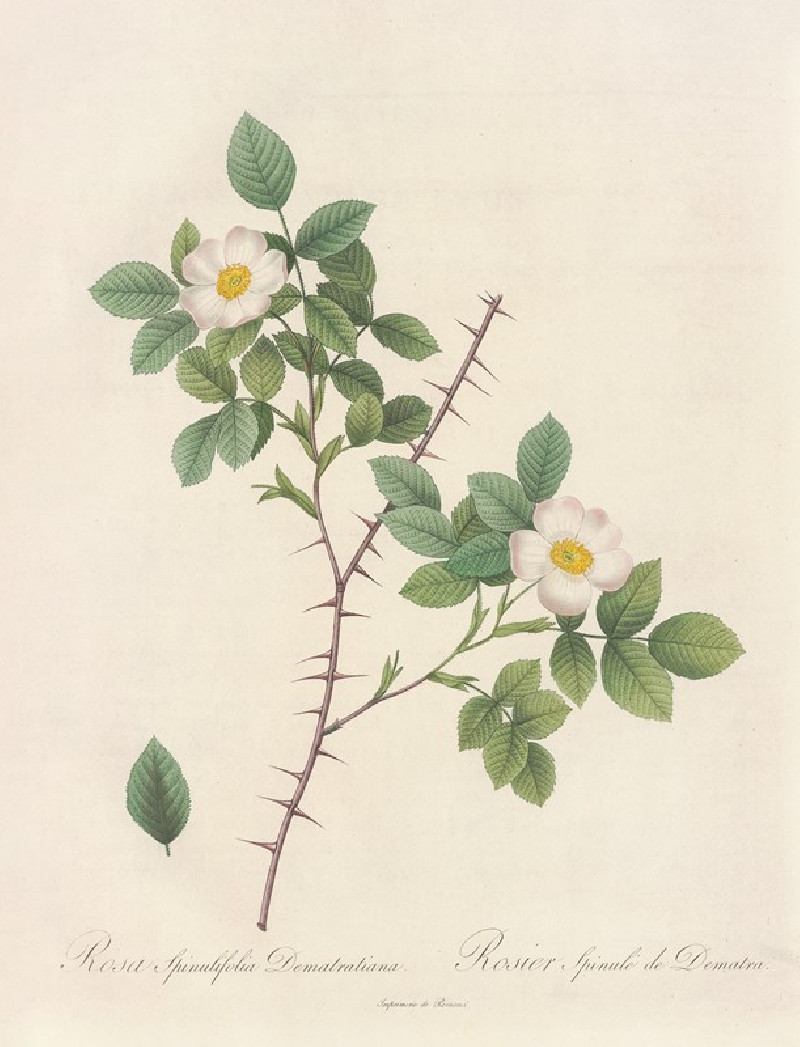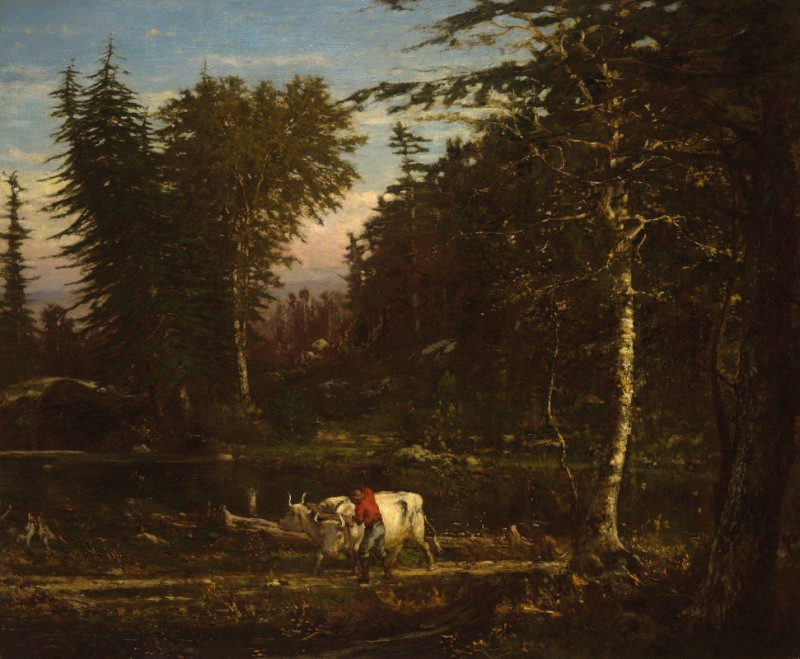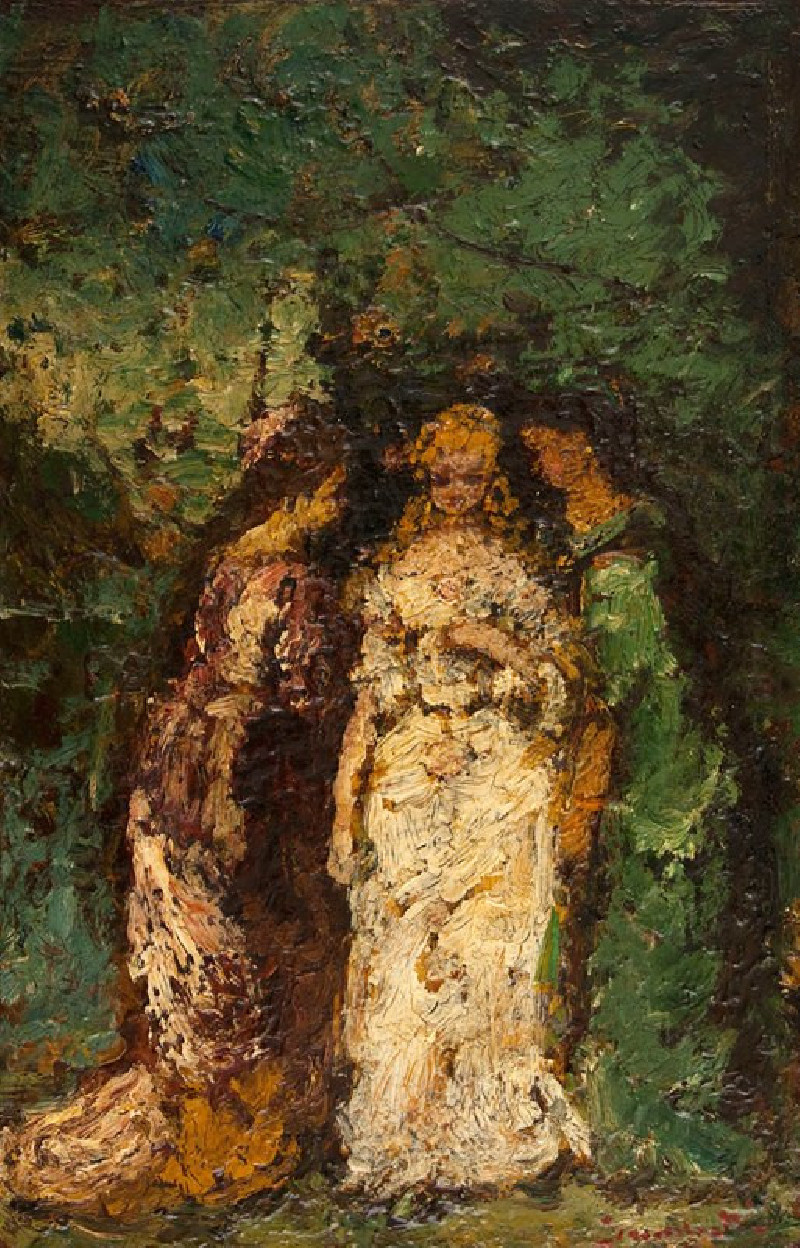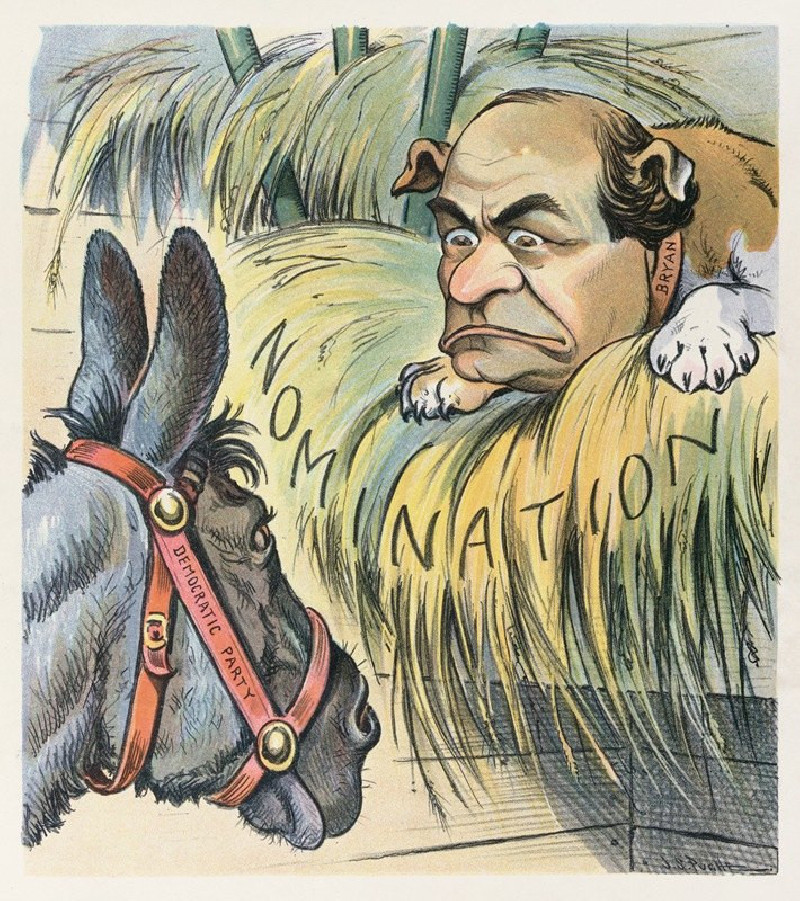Galtviehweide (1918-1919)
Technique: Giclée quality print
Recommended by our customers
More about this artwork
Ernst Ludwig Kirchner's vibrant painting "Galtviehweide" (1918-1919) transports viewers to an idyllic, almost otherworldly alpine landscape. Known for his expressive use of color and form, Kirchner depicts a panoramic view of a lush green valley surrounded by dramatic purple and pink mountain peaks. The focal point of the painting is a pastoral scene where cattle graze peacefully. Simplified and almost abstract in form, the cattle are painted in bold shades of yellow, contrasting vividly against the varying green hues of the hillside.A solitary figure, perhaps a herder, stands on the slope, integrated seamlessly into the landscape, suggesting a harmony between humans and nature. The composition is divided by a winding blue river, adding a dynamic movement to the scene. Through the exaggerated colors and forms, Kirchner communicates not just a visual place but an emotional landscape, inviting the viewer to experience the serene yet powerful essence of the natural world.This painting is an exemplary piece of Kirchner's work during his time in the Swiss Alps, where he sought refuge and solace in nature following the tumultuous years of World War I. It reflects both the influence of the Expressionist movement and Kirchner’s personal rejuvenation through the raw beauty and isolation of the alpine environment.
Delivery
Returns
Ernst Ludwig Kirchner (1880–1938) was one of the most important German Expressionist painters. He was a co-founder of Die Brücke, a group of German expressionist artists formed in Dresden in 1905. Die Brücke and Kirchner took inspiration from Vincent Van Gogh and Edvard Munch, as well as African and Oceanic art. They used woodblock printing as a medium to showcase their signature style: flat, unrealistic images with vivid colors. The recurring themes in Kirchner's artworks included exotic cultures, faraway landscapes, self-portraits, dancers and Berlin street life. His paintings and prints effectively portrayed non-European cultures despite the fact that he never traveled outside of Europe.

